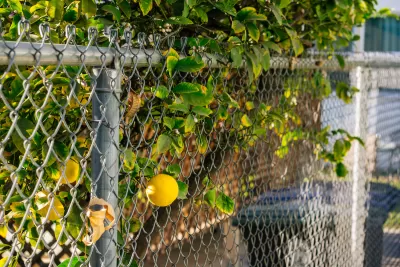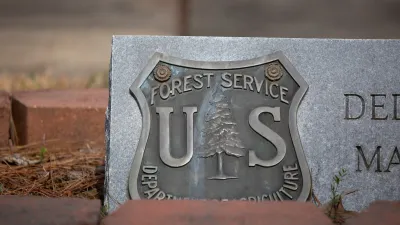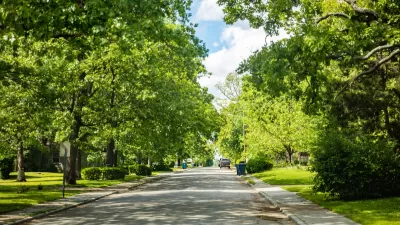Planting food-producing trees can offer both shade and a source of healthy foods in concrete-dominated neighborhoods.

It’s a well-known fact that trees can help reduce the urban heat island effect and lower temperatures in cities. Now, urban forestry advocates are touting another potential benefit of trees: food. As Max Graham explains in Grist, “Volunteers, school teachers, and urban farmers in cities across the country are planting fruit and nut trees, berry bushes, and other edible plants in public spaces to create shade, provide access to green space, and supply neighbors with free and healthy food.” In Tucson, an effort to plant mesquite trees combines the need for shade in the sun-drenched Arizona city with the mesquite’s traditional role as a food plant.
While urban forests are unlikely to provide a steady food supply for everyone who needs it, they can help supplement diets and provide access to fresh fruits. In Philadelphia, the Philadelphia Orchard Project produced over 11,000 pounds of fresh produce last year. “Another well-established food forest skirts the Old West Church in Boston, where volunteers have spent a decade transforming a city lawn into a grove of apple, pear, and cherry trees hovering over vegetable, pollinator, and herb gardens.”
FULL STORY: Hot? Hungry? Step inside these food forests.

Americans May Be Stuck — But Why?
Americans are moving a lot less than they once did, and that is a problem. While Yoni Applebaum, in his highly-publicized article Stuck, gets the reasons badly wrong, it's still important to ask: why are we moving so much less than before?

Using Old Oil and Gas Wells for Green Energy Storage
Penn State researchers have found that repurposing abandoned oil and gas wells for geothermal-assisted compressed-air energy storage can boost efficiency, reduce environmental risks, and support clean energy and job transitions.

Placekeeping: Setting a New Precedent for City Planners
How a preservation-based approach to redevelopment and urban design can prevent displacement and honor legacy communities.

San Francisco’s Muni Ridership Grew in 2024
The system saw its highest ridership since before the Covid-19 pandemic, but faces a severe budget shortage in the coming year.

Colorado Lawmakers Move to Protect BRT Funding
In the face of potential federal funding cuts, CDOT leaders reasserted their commitment to planned bus rapid transit projects.

Safe Streets Funding in Jeopardy
The Trump administration is specifically targeting bike infrastructure and other road safety projects in its funding cuts.
Urban Design for Planners 1: Software Tools
This six-course series explores essential urban design concepts using open source software and equips planners with the tools they need to participate fully in the urban design process.
Planning for Universal Design
Learn the tools for implementing Universal Design in planning regulations.
Heyer Gruel & Associates PA
City of Moreno Valley
Institute for Housing and Urban Development Studies (IHS)
City of Grandview
Harvard GSD Executive Education
Salt Lake City
NYU Wagner Graduate School of Public Service
City of Cambridge, Maryland





























